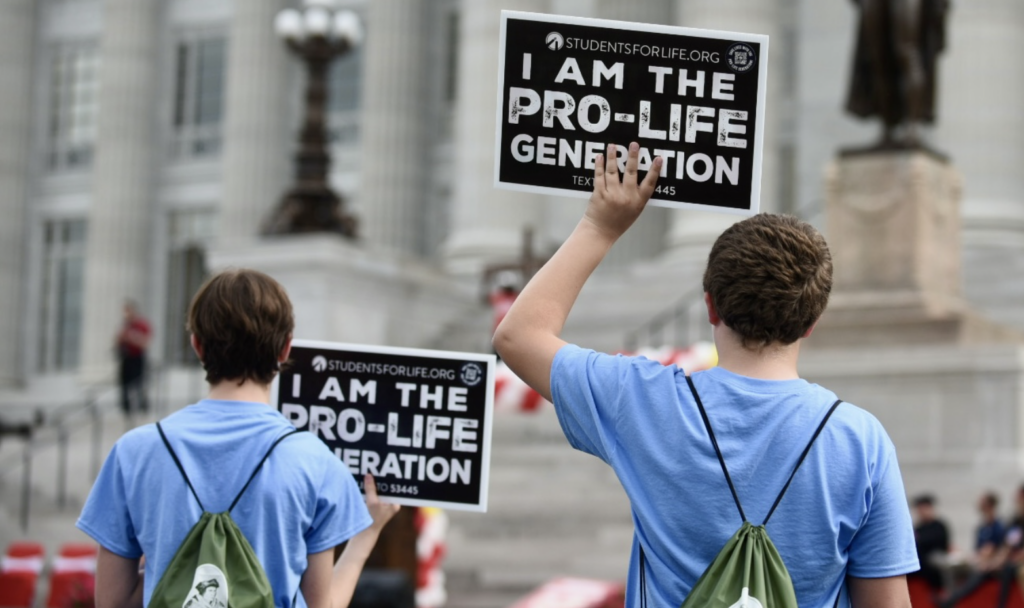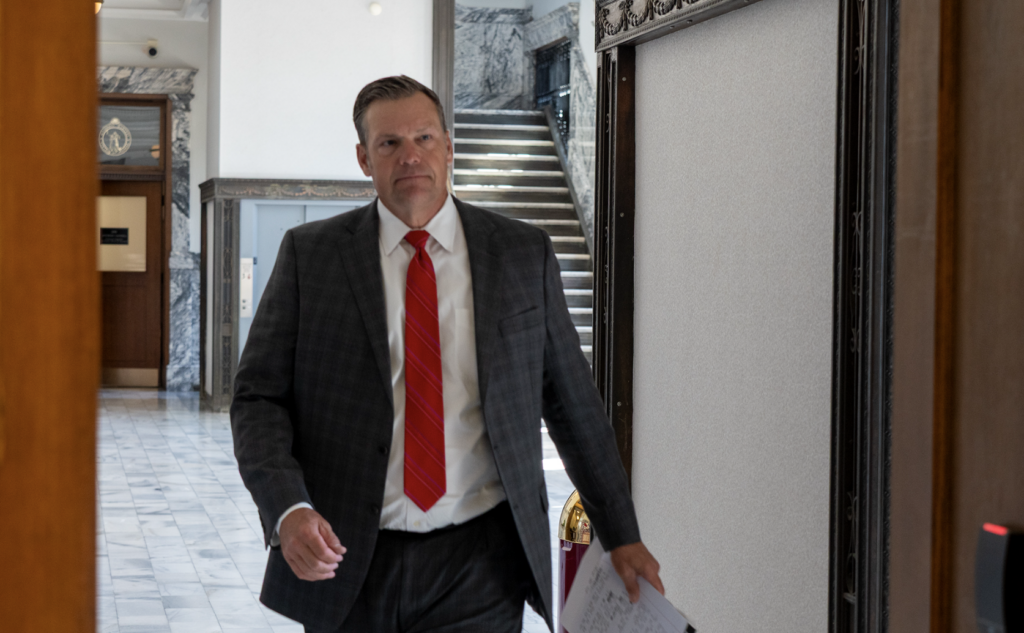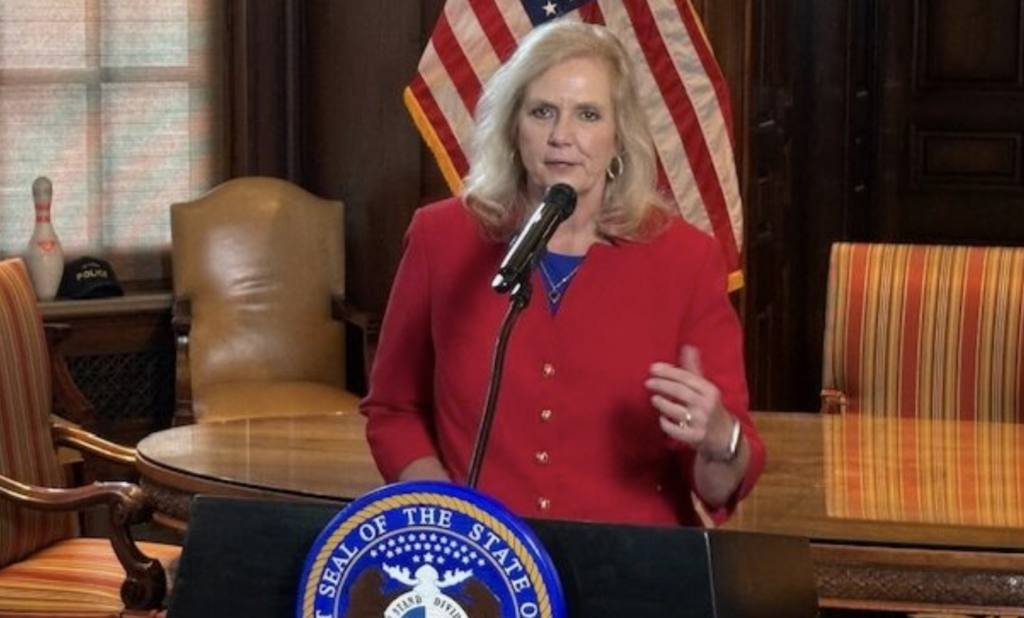What is ‘The People’s City’ at City Hall? A protest settlement and a microcosm of our community.
Each week for the last 4 and a half months, protesters gathered outside the downtown Kansas City Police Headquarters to demand the resignation or firing of Police Chief Rick Smith. Labeled “The Friday Night Protest”, this has become a weekly ritual for Black activist groups The Miller Dream and Black Rainbow.
Earlier in the summer, one evening’s protest turned violent as protesters clashed with police and the “Fallen Officer’s Memorial” in front of the station was defaced with spray paint. For many, it was a turning point in how they view the protests. Kansas Citians who do not support the protests cite the memorial’s defacing as one of the main reasons for their lack of support. Police officers view the action as an insult to their fellow officers who died in the line of duty.
Protest organizer Steve Young addressed the incident, saying: “Every time we protest, it’s never the right way to protest. It’s always a different way we should be doing it. When Martin Luther King protested, he was a peaceful protester…he wasn’t doing it right. He still got arrested because he wasn’t doing it right. He was performing civil disobedience over some stupid law because I couldn’t [as a black man] sit next to you [a white man] at a restaurant and eat. That was against the law. We are out here letting our voices be heard. It’s so much frustration because if I’m doing it peaceful, I’m still getting arrested. So if I burn some shit down, that’s just the consequences. Now maybe you will hear me because basically what you are telling me is that you just don’t want me to protest. Because anyway I do it is going to be wrong. They prefer not to hear my message because that message brings up a lot of history that makes a difficult conversation that they would rather not have.”
Since the earlier protest, the statue has been cleaned and now is wrapped in protective plastic, with a chain around the memorial and “No Trespassing” signs. Police officers observe the weekly protest from the roof of the police station. Each week, in an act of civil disobedience, protesters have stepped across the chain to erect their own memorial in honor of citizens who have died at the hands of the police. The protesters wrap the memorial in a Black Lives Matter flag, put up signs with the pictures of those who were killed, and light candles in their memory. Then they wait for the trespassing citation to arrive in the mail, or for an officer to arrest them as they leave.
Young has been cited four times and has also been arrested for trespassing on public property. Said Young, “That’s where they want to take the fight rather than sitting down and listening to our concerns. It’s kind of ironic that we’re fighting for justice for the Black lives that have been lost to KCPD actions and they want to enforce a law that they just made up for trespassing on public property. And they want to enforce that law but they don’t want to enforce the law that protects citizens from them. They want to enforce a law that keeps us from stepping over chains.”
On Tuesday, September 29th, the city introduced a new effort at reducing violent crime and building stronger ties between police and citizens called Reform Project KC. Said Kansas City Mayor Quinton Lucas, “We recognize that we can no longer operate in silos and that we’re taking this conversation directly to the community.” Unfortunately, none of the groups that regularly protest outside police headquarters were given a seat at the table to discuss the issues that they have been protesting for 18 straight weeks.
At that same press conference introducing the program, Jackson County Prosecutor Jean Peters Baker addressed the issue by saying that the reason that many groups (including the NAACP and the Urban League of the Greater Kansas City) did not attend the announcement was because “They don’t trust us. They don’t trust our plan. And they don’t trust the players that are part of it. It’s the job of all of us, anyone that holds a government office, it’s our job to engage them, but in a real way. They must have a leadership role.”
The very next day, a video shot at 35th and Prospect went viral on social media. The video shows Deja Stallings, a 9-months-pregnant woman, face down on the ground for filming an arrest, and the police officer arresting her seemingly putting his knee on her back while handcuffing her. Police insist that the woman was not merely filming but actively interfering with the arrest. They state that the officer tried to arrest her while standing but she resisted and after “taking her to the ground”, his weight was on his foot and not on the knee on her back. Police took Deja to the hospital for an examination, where she was released into police custody. Obviously, this shows the need for all officers to have body cameras (currently on order) for the department.
With only one exception, the Friday night protests have been peaceful. They march through downtown past the Jackson County Detention Center, where inmates flip cell lights on and off and bang on windows in support of the marchers. They interrupt the meals of diners in the Power and Light District, some of whom show support for the march, a few even joining the protest. They block traffic for a short time and then march back to police headquarters where they disband.
After 18 weeks of being ignored by city officials, protest organizers are now taking a different approach. Last Friday they came to stay, setting up tents on the lawn of city hall and vowing not to leave until their three demands are met. They call for the termination of Police Chief Rick Smith, the termination of the officer who pushed Deja Stallings to the ground, and a 50% reduction in police funding. They call for this funding to be redistributed to organizations that promote community welfare. After some initial pushback from police on the first night of the occupation, the city seems to be trying to ignore them until they go away. Activist Stacy Shaw declares that it will be a long time until they give up, referring to The People’s City encampment named as “our Valley Forge,” referencing George Washington and the Continental Army’s winter quarters.
Many on social media have referred to these protesters as unemployed, homeless bums with nothing better to do with their time than commit violent acts and vandalize city property. They deride them online as Antifa, Marxists, and worse. So I spent several afternoons trying to find out why these people are here and what they do when they are not occupying The People’s City. There, I found a wide variety of families, professionals, veterans, and students of all ages and backgrounds united in the idea that government needs to be responsive to the communities that they serve. The occupation site hosts activities, has dance parties, feeds protesters, and serves everyone from children to the houseless. Activists come and go for work and other outside commitments, but there are always protesters on-site to remind city government that they will not be leaving.
The Reverend Esther Holzendorf is 82 years old and a member of the activist movement SANKOFA, an African word that translates to “it is not taboo to fetch what is at risk of being left.” Since May, they have been working to get KCPD to take responsibility for the beating by two arresting officers of Breonna Hill, a Black transgender woman.
Holzendorf holds Chief Smith responsible for a corrupt chain of command that does not hold officers responsible for their actions, even to the point of refusing to send probable cause statements to the prosecutor’s office. Rev. Hozendorf is not the “average” protester described by most social media “experts.”
Holzendorf stated, “I’m with the people, I just happen to have lived through the civil rights movement, I just happened to be retired from the Oklahoma Department of Corrections, I just happen to be retired from the Department of Social Services, I just happen to have been involved with people all of my adult life. I’ve seen it from the cradle to the grave. I’ve heard the plans for Kansas City, I’ve heard the 20-year plans, I’ve heard the 30-year plans, I’ve heard all these plans and NOTHING has been done. So the place where we are now…the People’s City. This is what is needed and they have come prepared to stay and I am here today. We are here to help with this movement in any way that we can, as long as is needed. We are here to stay, not going nowhere. So Mayor Quinton Lucas needs to make up his mind and get off the fence and make some decisions as Mayor!”
Rochelle, who is also a member of SANKOFA, added, “I think it is important to be here because we support anyone who supports what is right. We believe that justice, dignity, respect of everyone is what we are entitled to. And that’s why we do what we do.”
Justice Horn is a past president of the student government for UMKC and currently works outreach for the Democratic party. While he doesn’t stay overnight in the tents, he does spend a lot of time “in solidarity” with the protesters throughout the day. Part of his emphasis on the younger protesters is to encourage them to vote.
“This year is different, not only with where we find ourselves as a country but as a community. Why we vote is that the next governor is going to pick the next two police commissioners on the Kansas City Police Commission. The next Missouri Secretary of State is going to make it easier for people of color to vote, the next state senator and representative are going to pass criminal justice reform. Voting and elections have long term effects in our community. I know that we are mad and angry about the system and we want the chief gone and criminal justice reform but we need to understand that people in elected office have the power to do that and we need to make sure we have a voice at the table.”
Kathy Simmons just happened to be downtown when she saw The People’s City across the street. Her brother was Kansas City’s 112th homicide in 1992, his death still an unsolved case. There was never any progress in the investigation, with police only saying that they suspected a minor was involved in his shooting.
But the investigation seemed flawed to the family.
Years after his death, the family was told by a recently released convict that prison rumors said the victim’s car was parked outside a secret “police house” when he was shot, and that police had “something to do with it”. (A police house is a private residence in high crime neighborhoods that secretly allow night patrol officers extra surveillance and a place to sleep.) Said Simmons, “If police are bad now, maybe they were bad in 1992 also. The police have thrown his case away so many times and tried to act like it was nothing, maybe the police did have something to do with it back then.”
Max is a 21-year-old white student of sculpture at the Kansas City Art Institute who grew up in a “progressive” family. When she was 13, his grandmother led a protest against a segregated swimming pool in Kentucky. Max had been protesting most of the summer until he was arrested. He stopped going to protests for a while, but now is at The People’s City because he thinks this is an important moment for KC. The police arrest of Stallings last week spurred him to return to the protests.
He supports defunding the police because he wants people to feel safe around the officers who are supposed to be protecting them. “I’m out here because I’m angry that my fellow Kansas Citians are dying at the hands of city employees.” He admitted when the first protests occurred this summer that he probably was there because it was the “cool” thing to do but now, he said, “I’ve come to a point in my life that advocating for myself just isn’t enough and I’m going to do everything I can and use every ability I have to help others that are being harmed”.
Alex Eaul is from St. Louis, a vocal music education undergrad attending UMKC. He questions the amount of money spent on policing that seems to have little effect on the crime rate. He feels that the 50% budget reduction activists are demanding for KCPD could be better spent on more “life-affirming” programs such as affordable housing, medical care, and social services that also reduce crime. When asked about the justification for the protesters’ actions that disrupt local businesses like the restaurants in Power and Light or even city hall, he replied, “The reasons we go to places that are inconvenient for people is that my life is inconvenienced all the time. Black people’s lives are inconvenienced, women’s lives, gay people’s lives, anybody’s lives who are not straight, Christian, white male’s lives are inconvenienced every day by the systems that we have. They complain in Power and Light that “we’re just trying to eat our dinner” and I’m like, well, I’m just trying to live, yet the system is destroying me. Maybe this little bit of uncomfortableness that you have can be a learning experience and you can try to imagine how uncomfortable it is for us in everyday life. That’s what these protests are about.”
The protesters of “The People’s City” are much more diverse in their backgrounds than many understand. They are committed and determined that they will not leave until city officials meet their demands. They deserve to be heard by the elected officials who represent them—on whose doorstep they now occupy.













